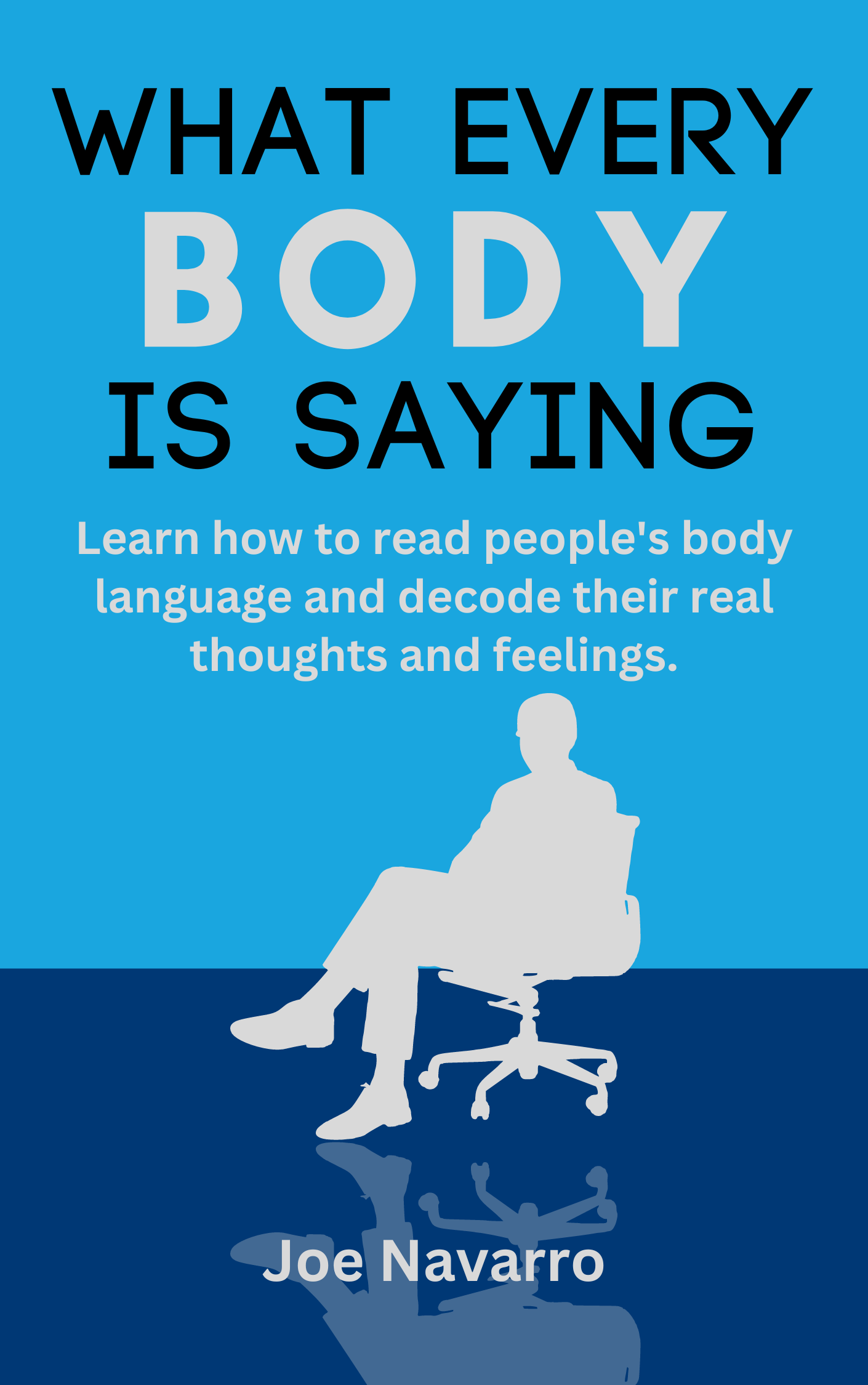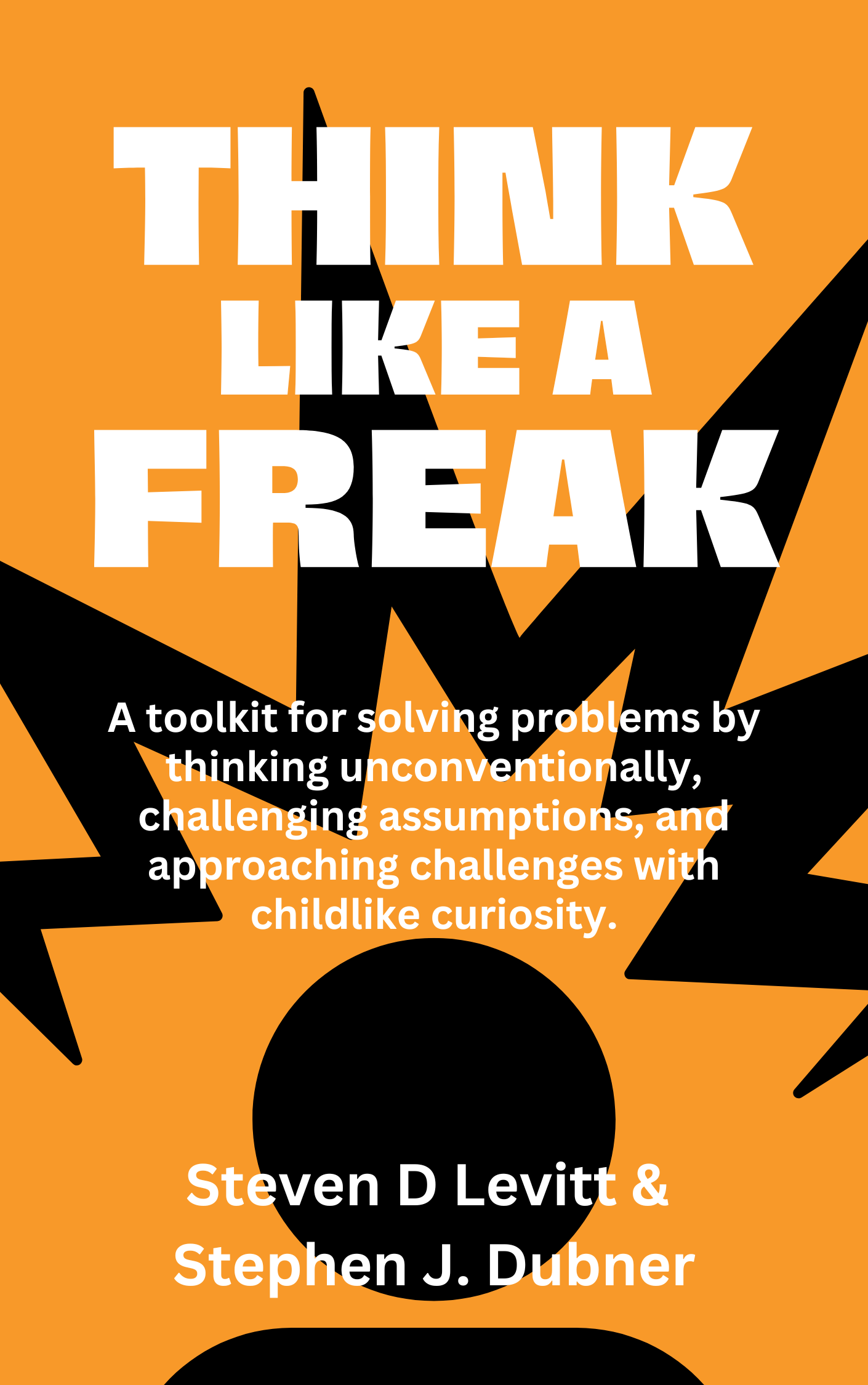Introduction
Communication is not just about listening to spoken words. You can't know if someone is lying or telling the truth just by their words, right? Body language is what reveals people's true intentions even when words convey the opposite. Do you want to be a good observer of body language?
What Every BODY is Saying: An Ex-FBI Agent's Guide to Speed-Reading People (2008) by Joe Navarro and Marvin Karlins gives you an insight into the nonverbal cues of communication and helps you understand people's hidden feelings. So, for anyone interested in psychology or observation skills, this book is perfect.
Joe Navarro, a former FBI agent, is an expert in decoding people's body language and has worked for 25 years in this field. He has written several works on nonverbal communication.
Nonverbal Communication Is More Honest Than Words Spoken By A Person.
Fun fact: only 35% of communication is done through words! The rest is all through nonverbal cues. Surprised? Think of it like this: human communication is a jigsaw puzzle - words and all the nonverbal cues are the pieces. Only when we have all the pieces, can we solve the puzzle! But, most of us just pay attention to the verbal aspect of communication. We rarely consider voice tone, body movements, gestures, or even the firmness of handshakes. Those are the nonverbal cues, btw. And they are very important! Apart from aiding communication, that is. For instance, the author, Navarro, made a lot of friends at school when he initially moved to the USA from Cuba, solely relying on nonverbal cues. Without using language! That's the power of nonverbal cues.
Now, trained professionals, like those working for intelligence agencies or defense, can observe nonverbal cues better than ordinary peasants. They use their knowledge and skillset to detect the lies of criminals. No, they're not telepaths! Nonverbal cues are simply more reliable than what's communicated by words. You can say "I'm not nervous" all you want, but your fidgeting feet expose what your words try to hide. The reason is that most people are not aware of the signals they send out through nonverbal cues. It's subconscious. So, there's no option to "lie". Unless you're a trained professional yourself. Or a hardened criminal!
Now, let us take a step ahead and understand the mechanism of communication and what it has to do with our nervous system.
Your 'Honest Brain' is The Snitch!
Do you know which part of the brain is responsible for communicating information that words don't express? What guides our self-expression? You got it! The honest brain, aka the limbic brain! This guy reacts to all senses and emotions instinctively and does not take breaks. It basically instructs the body on what to do in response to every stimulus. This response is automatic and quick and therefore, tough to hide.
Now, you might be wondering, "What is the deal with the quick responses? Like just take your time man!" The thing is the quick responses are for our survival.
You might be aware of the freeze, fight, or flight response. The limbic brain is responsible for the regulation of these three responses. These three responses are a legacy of cave-dwelling early humans who dealt with predators and stressful situations all the time. For instance, when confronted with a predator, their limbic brain sprang into action and sounded the alarm, urging them to run—long before the rest of the body even realized there was a threat (plus staying put and fighting most gigantic predators wasn’t a realistic option). Today, we do not face such extremes in our day-to-day lives, but the limbic system continues to throw out signals that we are not in control of. Ever been put on the spot by someone's invasive questions, and you fold your arms tightly across your chest? That's your limbic brain getting defensive. Or take the fight response - which is exhibited in ways ranging from physical aggression to insults.
So simply, the responses triggered by the limbic part of the brain become cues for the detection of lies or discomfort. Now, let us get this party started and learn about the most important nonverbal cues to look for.
Our Legs And Feet Give The Most Honest Nonverbal Cues In Communication!
Hiding our true feelings is a part of our upbringing. We grow up learning to control our expressions, making our faces unreliable. So, a pleasant smile might be hiding hidden disgust but works as part of accepted social behavior. Interestingly, we instinctively look for nonverbal cues in a person's face. Now, that ain't gonna be much help, right?
It is our feet and legs that send the most honest nonverbal cues. Here's a way you can decode body language: the next time you talk to someone, notice their feet and legs. If their feet are turned away from you, it either means that the person is about to leave or is uncomfortable in your presence. Crossed legs usually mean a sense of comfort but can also be interpreted as a barrier - they want distance. Other noticeable signs are wiggling of feet when we are excited and happy. Experts often learn body language by assessing two or three nonverbal cues to come to a conclusion.
Interestingly, our feet have played a major role in our evolutionary history. Our feet reacted swiftly when faced with an unpleasant or threatening situation. The traces of this response can be easily observed in our honest feet today - our foot movement is still honest and involuntary. So, next time, when you want to gauge someone's feelings, look at their super honest legs and feet. Plus these foot/leg movements can resonate throughout the body, so look out for indications of these elsewhere as well, even the mouth!
So, that was about feet and legs. Now, our other set of limbs isn't silent either.
Our Hands Mimic Our Mental State.
Take a moment to imagine: two men standing - one with thumbs hooking his pockets, shoulders rolled back like there ain't any trouble in the world. The other has hands balled in pockets. No crystal ball is needed to tell who's feeling what. Generally, a thumb sticking out of pocket indicates confidence. And thumbs in the pockets? That's hiding, saying maybe I ain't so sure of myself. See? One tiny observation is all it takes. Similarly, recall a situation when someone pointed a finger at you. Pointing fingers is seen as hostile behavior and usually triggers a negative response. Thumbs up is good. A firm handshake is good. Finger tapping is bad. Arms on the table is authoritative. And there are a hundred other things that our hands and our fingers can convey.
Now, the plus point in the observation of hands is that it comes naturally to us. We automatically notice these things, sometimes even without registering. Yet again, our evolutionary history plays a role here. Our precise and versatile hands perform almost all functions for us. So, as part of our survival mechanisms, we notice others' hands to know if someone is holding something that may harm us.
So, next time you want to decode moods without uttering a word - simply let the hands do the talking!
One big perk of reading body language? You can tell if words are false or sincere.
Reading Nonverbal Cues Help You Spot Dishonest Behavior.
Remember that guy with fists jammed in his pockets? Sure signs of being insecure, right? What if he's just dead tired? Is it possible to spot dishonesty based on verbal cues, only? Can we differentiate it from excitement or exhaustion?
This is where pacifying behaviors come in. That's how you can differentiate if someone is exhausted or excited or straight-up lying. At least, most of the time! Now, what are pacifying behaviors? We'll tell you in a minute. Some background, first.
You know the whole deal about the instantaneous and automatic signals sent by the limbic part of the brain to the body. Now, what do you think will happen when we deliberately go against its instantaneous reaction and tell a lie? What does the 'honest' brain do then, knowing that we are lying? Telling a lie creates a conflict. This conflict triggers the limbic part to release neurotransmitters like adrenaline. And a lot of adrenaline manifests itself in crazy ways. For one, it activates the fight-or-flight and let's not even talk about the twitching and the fidgeting and the darting eyes and restless heart. Obviously, the observers will observe this and just like that, the cat is out of the bag! Now, quivering and all can hold multiple meanings. For instance, it might be a sign of excitement when a person boards a flight for the first time. It might also mean a sense of discomfort during an interrogation-like situation. So, what's the difference? Pacifying behaviors!
A person generally exhibits pacifying behavior to calm himself in response to conflict. For example, if a person is quivering and holding a pencil, they might start chewing the pencil. That's a pacifying behavior. Similarly, touching the face or neck is largely seen as pacifying behavior during an interrogation. People have unique ways of pacifying. And only observing someone over time can help you catch on to what's normal versus them just faking being chill. Pacifying behaviors will be easier to pick out as oddities if you know how a person reacts in a normal situation.
Now, simply grasping the theory behind body language is not enough. Real-world application demands astute observational skills and nuanced interpretations. So that's what we'll learn next.
Develop Precise Observation Skills To Differentiate True Communication From False.
Chapter 9
Details coming soon.











